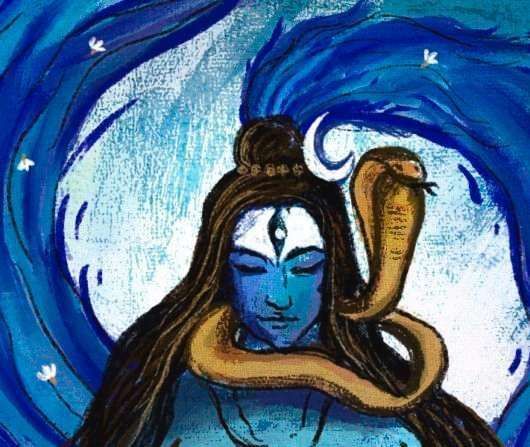
Shiva and Ganga – The Legend and its Meaning
Shiva and Ganga – The Legend and its Meaning
Sadhguru: As you know, Ganga is supposed to drip from Shiva's dreadlocks. There is a saying in Himalayas that every peak is Shiva himself. The Himalayan peaks are snow-capped, and the many small rivulets that flow out of these snow-capped mountains slowly assimilate and become streams and then rivers. This is why they said the mountain is like Shiva, and these streams flowing down are the dreadlocks and became river Ganga, which came from the skies – which is very true because snow falls from the skies.
It is that symbolism which has created the legend of Ganga, and it is considered to be the purest water because it comes from the sky. Above all, it has acquired a certain quality by flowing through a certain terrain. I have trekked alone every year in the Himalayas from the age of nineteen, and I was cold and hungry all the time because I just came without any much equipment. All I had were denim trousers and a thick T-shirt. I have experienced this many times that just a few handfuls of Ganga water kept me going for more than forty-eight hours without any sense of being tired. And I have heard first hand from many people how their ailments have been cured just by drinking Ganga water. As you know, in India even if someone has to die, they need a little Ganga water.
Ganga water can be something very special, not because you believe something, but simply because the quality of the water is like that. It is the Himalayas which does something to this water.
A River Is a Living Entity
The legend goes that Ganga is supposed to be a celestial river which landed on this planet, and the force of it would have caused damage to the world so Shiva took it on his head and let it flow through his hair gently down the Himalayan slopes. This is a dialectical expression of what it means to people, its sanctity. The purity of the river has become the very symbolism of purity for an Indian. If you are involved with rivers, you would know that every river has a life of its own. This is true everywhere in the world, whether it is the Nile in Egypt, Danube in Europe, Volga flowing through Russia and Central Asian countries, Mississippi in America or the Amazon in South America. They are not treated as just water bodies. As we know, most cultures evolve from river banks for obvious reasons, but for people who are closely associated with the river, it becomes a living entity. It has a personality of its own; it has its own moods, emotions and eccentricities.
A river is a live process and this is true for Ganga in India too. I have had the fortune of traveling along Ganga right to its source in Gomukh and also traveling up almost every one of its major tributaries – like the Mandakini, the Alakananda and, of course, the Bhagirathi which is the main part of Ganga. Up in the Himalayas it means sanctity and purity, but as it flows down into the plains it is the lifeline of the northern plains of the Indian sub-continent. Ganga has been a witness to any number of dynasties rising and falling over a period of time. It has been a constant source of strength and prosperity to people in that part of the country.
Now a time has come where we are thinking of it as a resource and we have dammed it up in the Himalayas which has hurt a lot of people who look at Ganga as a live Mother or a goddess. And further down in the plains it is been hugely polluted. Some efforts are being made by certain concerned people to once again bring Ganga back to its pristine nature. I have been traveling to the Himalayas for thirty years and I see that there has been a great change in the volume of snow. So many of the snowcapped peaks are no more snow clad, and have just become bare, pointer, jagged edges. There is a serious danger to Ganga as a river and the receding of the glacier is happening rapidly which we can clearly see at the very opening of the Gomukh. It is called Gomukh because it was like a cow's face. I remember when I first went there – in the month of August of 1981 – this was just a 15 to 20 feet opening out of which water was spouting, and it very much looked like a cow's mouth. Today it is a 200 feet wide cave where you can walk in almost half a mile if you wish to.
The impact that the climate change is having on the life of Ganga is phenomenal, and at any point if it threatens the survival of the river, this could mean a great catastrophe to the northern part of India where it has always been a lifeline of the people.
The Importance of Saving Ganga
Every culture, every people, every civilization needs some symbolism to inspire them to bring a different level of sanctity into their lives. Ganga has been doing this forever and the greatest assembly of human beings happen on its banks during the Kumbhamelas where more than 8 to 10 crore people gather. Nowhere else on the planet does such a meeting of human beings happen. The backbone of this inspiration has always been the Ganga and the purity that it symbolizes for people. This symbolism is very essential. Saving this river and keeping this river pure is not only for our survival and our requirement, but to keep the human spirit up.
Editor’s note: In this video, Sadhguru explains why rivers are worshipped in India.
